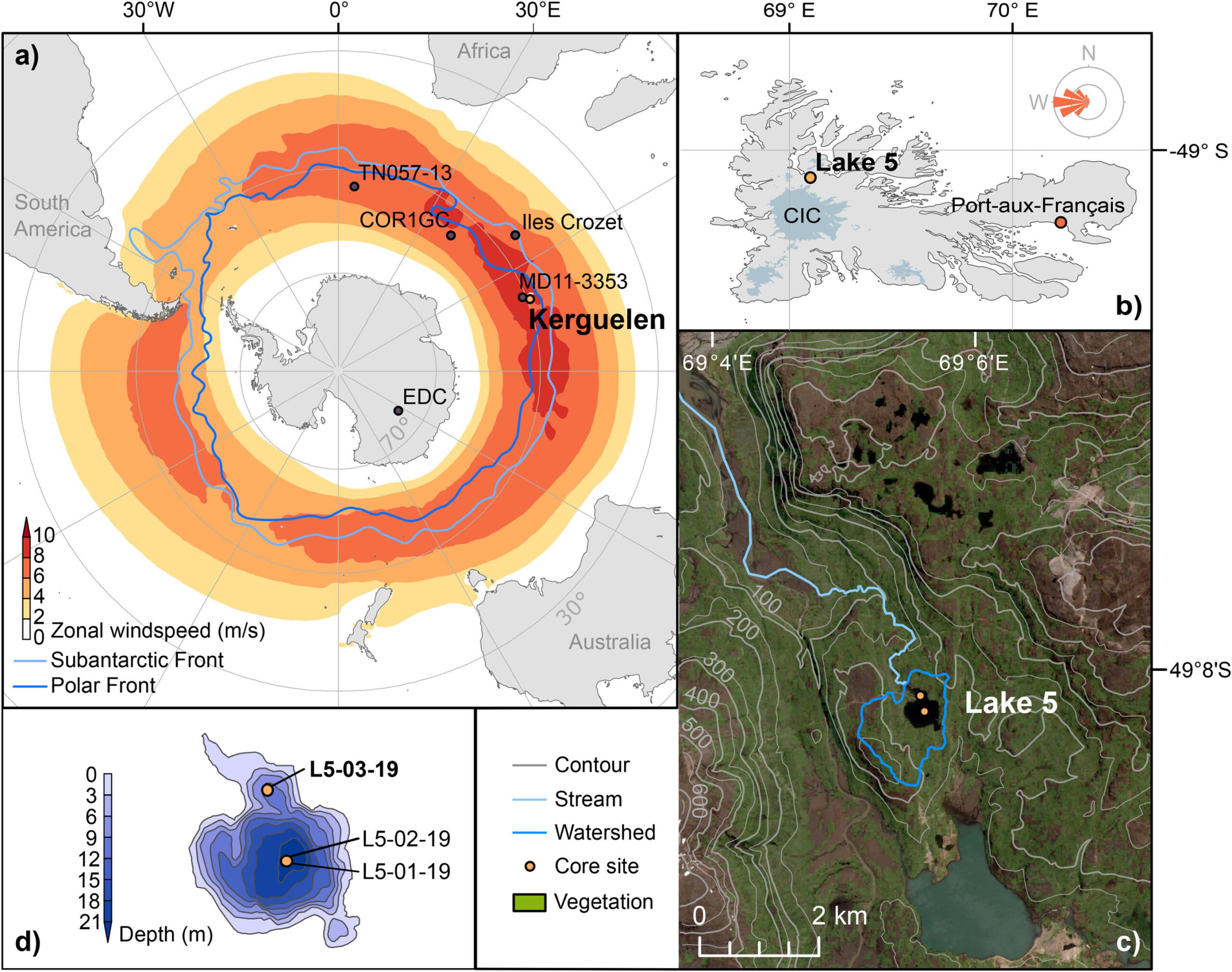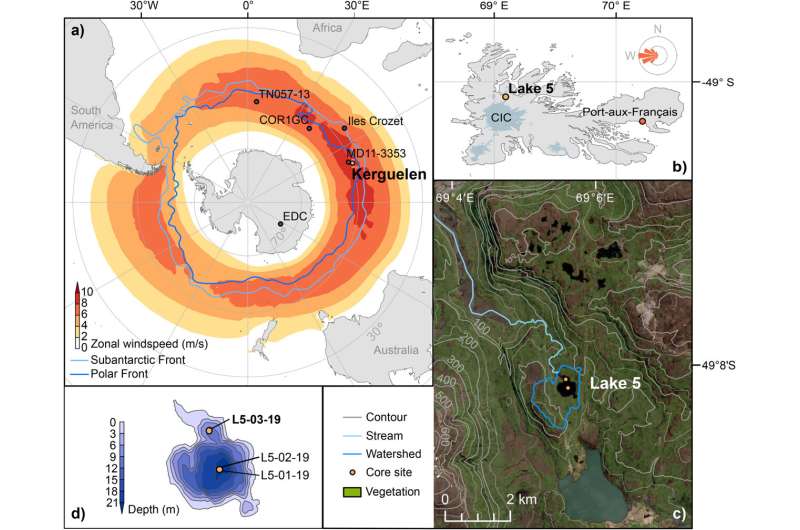

In Bergen, Maaike Zwier analyzed pollen in sediment cores from lakes on Kerguelen Islands and South Georgia. In this way, she can say something about the local climate going back almost 12,000 years. The study is published in the journal Quaternary Science Reviews.
“I used to be a beekeeper back home. As a beekeeper you work a lot with pollen in the context of honey. I combined my hobby with work throughout my studies, including in my most recent paper,” says Zwier, who is from the Netherlands.
“I knew the pollen from local plant species from the sub-Antarctic Island from earlier research, but I had to learn about a lot of new ones, like the pollen from African species. I got some help from the Nelson Mandela University in South Africa. It was really fun to find out which species it was every time I found a new type of pollen grain. Together we were able to recognize most of them,” says Zwier.
In September, she successfully defended her thesis “Winds of change: A multi-proxy approach to constrain Holocene climate and wind dynamics in the sub-Antarctic” at the Department of Biology, UiB and the Bjerknes Centre.
The Southern Hemisphere Westerly Wind belt is important for the global climate, because the strong winds around Antarctica drive ocean circulation. Currently, this circulation enables the Southern Ocean to absorb a significant amount of the heat and carbon dioxide that humans have released into the atmosphere. In Maaike Zwiers study, she and her co-authors tried to reconstruct the natural variability of the Southern Hemisphere Westerly Winds.
Wind history from the Holocene
“The westerly wind belt is very important. For the global climate system; precipitation and temperature patterns; it shields Antarctica from mid-latitude heat, and it drives ocean circulation and therefore has a big impact on heat and carbon exchange between the atmosphere and the ocean. We want to know how this wind belt behaves, the natural variability of the system, so we can understand how it might react in the future,” says Zwier.
They aimed to reconstruct the Westerlies over the Holocene period, which spans the last approximately 11,700 years. This was accomplished by analyzing fossil assemblages of pollen in lake sediments from the Kerguelen Islands, positioned in the middle of the Southern Ocean southeast of Africa.
From South America and Africa
“The Holocene is a relatively important period because it can tell us something about how we got to our current climate status. I analyzed sediment cores to get an understanding of the depositional environment and deduce information about the past climate. By looking at the local pollen from the island, I could say something about the local climate conditions.
“But we also found pollen from South African species. These are blown by the strong winds from Africa all the way to Kerguelen, over 4,000 kilometers. We even found pollen from one species from South America, which is incredibly far away,” says Zwier.
With the long-distance transported pollen, they saw that if it was warmer, there would be more pollen coming from Africa. That gave them the idea that in the early Holocene, when it was warm, tropical airmasses were going further south, transporting the African pollen to Kerguelen, and indicating that the Westerlies were positioned further south.
Later in the Holocene, around 8,600 years ago, they found a big shift where almost all of the pollen from Africa disappeared. Then, the local species that thrive in the cold and harsh environment became dominant. This indicated that the Westerlies moved northward, bringing cold airmasses from around Antarctica, without African pollen, to the Kerguelen Islands.
More information:
Maaike Zwier et al, Holocene changes in the position of the Southern Hemisphere Westerlies recorded by long-distance transport of pollen to the Kerguelen Islands, Quaternary Science Reviews (2024). DOI: 10.1016/j.quascirev.2024.108595
Provided by
Bjerknes Centre for Climate Research
Citation:
Fossil pollen reveals history of Southern Hemisphere Westerlies (2024, October 15)
retrieved 16 October 2024
from https://phys.org/news/2024-10-fossil-pollen-reveals-history-southern.html
This document is subject to copyright. Apart from any fair dealing for the purpose of private study or research, no
part may be reproduced without the written permission. The content is provided for information purposes only.